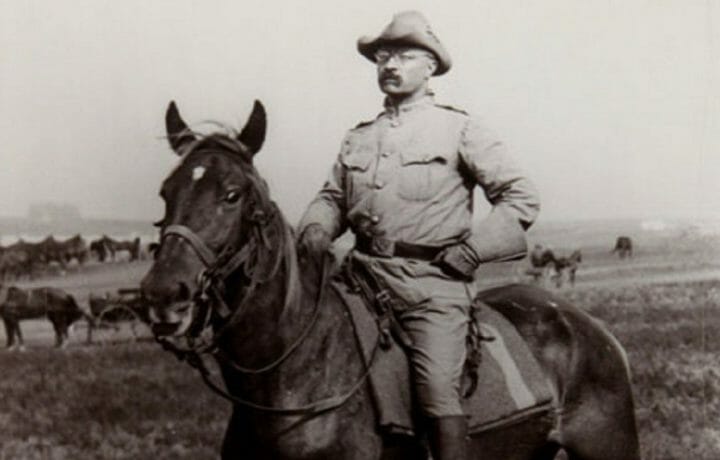In a recent history course, we were reviewing the early life of President Theodore Roosevelt (TR). As a veteran, I started to notice his possible pattern of PTS and wondered if he was ever diagnosed with anything similar to it after losing his wife and mother on the same day.
I want to explore his possible PTS and the path he traveled as a man and a leader afterwards. I think we can learn some valuable lessons about how to turn our worst days into a better tomorrow in service to others. I believe that is exactly what Theodore Roosevelt did as the 19th century closed.
Young TR was a state legislator in New York at the time of his trauma; he was a man raised in very comfortable surroundings. When the excited father raced home from the state capital to see his first child born on the 12th of February, he didn’t know it would end with the death of his wife and then his mother on Valentine’s Day. TR chose, as many do, to get some space from the incident. He handed off his daughter to a friend and went out to the Dakota Territory and began cattle ranching in what is now the North Dakota Badlands.
He tried hard to fit in with this new crowd of hearty Americans and used the experience to reflect on what was important in life. He was not easily accepted into the American West, as he was a privileged, educated Yankee; but he persevered and kept trying to learn their culture and gain acceptance into it. In the many moments of down-time on his ranch he would sit on his porch and look out over the Little Missouri river at the Badlands’ buttes. Over the next couple years, he would formulate a political platform for improving America that propelled him to a governorship and eventually the White House.
The balance between taking risks and staying alive
TR seemed to become ever more willing to take risks on his ranch and in his new community. We have seen many with PTS start to think they were invincible, or start to care less about their own mortality. From riding horses, herding cattle in lightning storms, a bar-fight, and even taking a posse to catch thieves; TR seemed to be more interested in doing the right thing than staying alive. It is a very fine balance for many people, who feel they may have already lived enough of a life in their past before the trauma.
Roosevelt also used his time in Dakota to find a few good friends, or at least a few folks he could trust to share his ideas with. A critical part of managing PTS often includes finding a select group of kindred spirits you can speak to day or night. Even though TR was not a drinker, he was able to find a few rough and tumble folks who understood perseverance around the cow towns. The ability to speak freely with honorable men and not worry about having his confidence broken might have been one of the best ways he healed himself in Dakota. He would try to shape America in the image of that type of solid citizen over the years.
I think TR was able to use his time out West to not only diminish the grief of losing two beloved people, but also to make himself whole again; or as whole as possible. He came out the other side of this phase of his life more confident and dedicated to ensuring every American had a fair opportunity for a good life. He believed more in hard work and fairness; he didn’t become bitter or resentful of those who hadn’t lost so much. TR may have also been benefiting from a service animal without even knowing it. Those of us who spent a lot of time around horses know the calming capability they possess. Certainly, the fresh air and rugged days of exertion outdoors helped him to re-focus, as it still does for many today. I think Team Red, White and Blue could have started their first chapter with TR.
Whether Theodore Roosevelt was working through PTS or not is unprovable today, but the lessons he leaves us should not be overlooked. He became one of the most focused and decisive presidents in our history and set a new precedent for the active presidency that has endured to this day.
Lessons we can draw from his possible PTS and reactions:
- You don’t have to recognize the trauma and your own reaction to it as a medical diagnosis to positively handle PTS.
- Learn to manage your risk-taking: the right friends can help you.
- Use your moments of solitude wisely to plot out a better future.
- You can become stronger because of your PTS, not just weakened.
- You can find a way to channel your loss and pain to improve the world.
- There is a positive role for animals and the outdoors in PTS management.




